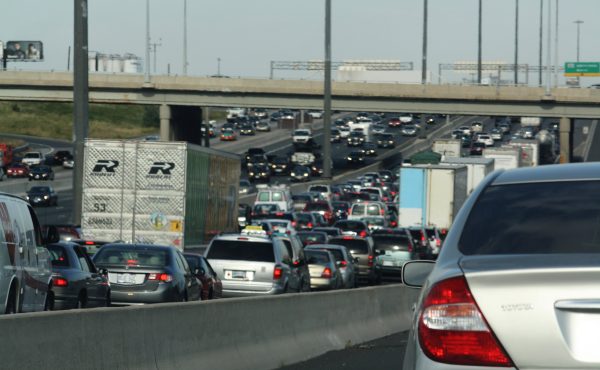Suburbs focus hard on Miller [Toronto Star]: Toronto Mayor David Miller earned a strong mandate from the former city suburbs in last week’s election. We’ll soon find out if he’ll show his gratitude. Miller is meeting individually with all 44 members of council this week to see which committees they’re interested in sitting on, and the mayor is expected to announce his choices for committee chairs at or just before the inaugural council meeting on Dec. 5. The folks who represent the former cities of Etobicoke, North York, Scarborough and, to a lesser extent York and East York, are watching closely to make sure they get their fair share of power. “I think we heard loud and clear in this election that the suburbs need more attention,” said councillor Giorgio Mammoliti (Ward 7, York West).
Will Miller oust Moscoe? [Toronto Star]: Some say it might be the biggest test yet of Toronto Mayor David Miller’s loyalty. City council early next month is scheduled to make a host of appointments to various committees, including the Toronto Transit Commission. And the question on a lot of lips is what will happen to outspoken TTC chair Howard Moscoe.Many councillors say Moscoe has been a polarizing force on the TTC, too intent on staking out headlines and not worried enough about striking deals to help boost the city’s always-struggling transit system. There’s no shortage of “Moscoe must go” forces.”If I was a constituent of Howard’s I’d say he’s the best guy you could have,” said Councillor Brian Ashton (Ward 36, Scarborough Southwest). “But he’s a lousy manager. It’s just not his style.”
City Hall players eye up key positions [National Post]: The maneuvering for key positions at city hall during David Miller’s second term has begun, with the mayor spending three days meeting with councillors as he prepares to make appointments. Under new rules approved last spring, the Mayor has the power to unilaterally appoint the chairpersons of council’s seven major committees. As part of the selection process, he has been holding one-on-one meetings with both veteran councillors and political neophytes. “He is trying to see what their wishes and desires are, which will help him appoint the committee chairs,” said Deputy Mayor Joe Pantalone.
Former Vauhgan mayor asks council for recount [Toronto Star]: The bitter battle for the Vaughan mayor’s job continues today with outgoing Mayor Michael Di Biase appealing to his council colleagues to approve a recount. Di Biase, who lost to Linda Jackson by 90 votes in the Nov. 13 election, is expected to argue that there were problems with some vote-counting machines, among other things. But Jackson said Di Biase “is grasping at straws.”And city clerk John Leach downplayed any chance a recount would result in a change. “These (vote-tabulation) machines are extremely accurate. It’s highly unlikely you are going to make up 90 votes one way or the other on a recount,” he said, adding that the cost of a machine recount will be “minimal.”
Defeated Vaughan mayor convenes recount debate [Globe and Mail]: An extraordinary bid for political resurrection is expected to unfold in Vaughan today as Mayor Michael Di Biase — defeated in last week’s election by 90 votes — convenes a special meeting of city council to debate whether to grant him a recount. Mr. Di Biase, who remains Vaughan’s mayor until Nov. 30, alone has the power to call a special meeting of city council. During the election campaign, he claimed the support of all of the council’s members except Linda Jackson, the regional councillor who outpolled him in the Nov. 13 election. And the mayor may not stop at demanding a recount. Pointing a finger at alleged irregularities and problems with new vote-counting machines, his team may even ask a judge to have the entire mayoral election scrapped — a move Ms. Jackson dismissed yesterday as “desperate” and unprecedented.
Thousands of voters flub postal ballots [Globe and Mail]: Thousands of Ontario voters were disenfranchised in the Nov. 13 municipal elections because they flubbed their postal ballot. People who chose to mail in their vote had to complete a series of apparently simple tasks: Read the instructions. Mark the ballot. Enclose it in a secrecy envelope. Sign their name to a declaration. Put the secrecy envelope and the declaration in another envelope and mail the lot to the municipality.
It all appears to have been too much for a record number of people whose ballots weren’t counted because they either failed to sign the declaration, forgot to enclose it, or put the declaration with the ballot in the secrecy envelope.

Health tied to neighbourhood [Toronto Star]: We’re not as fat, we don’t smoke as much and we’re not as stressed as people in other major Canadian cities, according to a national study released yesterday. But when you get down to the neighbourhood level, the disparities between the health of Torontonians are great — particularly between high- and low-income earners. The joint study (download the report), carried out by the Canadian Institute for Health Information and the Canadian Population Health Initiative, is the first of its kind to compare health outcomes and behaviours in Toronto, Montreal, Halifax, Vancouver and Calgary.
Let’s embrace the Gardiner [National Post]: The problem with the Gardiner Expressway is it’s too small and modest. After you’ve seen Shanghai’s splendid, gargantuan elevated roadway, it’s obviously a mistake to tear down the Gardiner. Instead, we should take our cue from Shanghai and celebrate it as a unique architectural feature that performs an extraordinarily useful public service — and tart it up. The Gardiner got off to a bad start, compared with Shanghai’s elevated road system. When it was built, the Gardiner stood out, exposed to ridicule between the city and the lake. It was called a barrier. It became a surrogate for our lack of vision, an excuse for why the lakefront wasn’t developed that let us off the hook for our planning ineptitude.
The Way We Were [Toronto Sun]: It was on this day in 1954 that the Toronto Transit Commission reduced the cash fare it charged to ride in the central (non-suburban) zone on its streetcars, buses and the recently opened Yonge St. subway from 15 cents to 10 cents. Tokens, which had not been widely accepted by the public, would be discontinued. The subway turnstiles would be altered so they would accept dimes as well as the few tokens that had been sold.




3 comments
I’ve just finished reading Kelvin Browne’s piece in the Post about learning to love the Gardiner- not necesarily a bad proposition. However, creating aesthetic enhancements & integrating it (especially the space beneath it) into the urban fabric is made very difficult in Toronto by the co-existence of the Lakeshore beneath the Gardiner.
I’ve recently returned from Buenos Aeries where two examples of usable space beneath elevated expressways were instructive. Both involve cross streets passing beneath the structure.
In the first, wide beautifully landscaped setbacks formed plazas filled with cafe tables for the 3- 4 restaurants under the roadway above. In the second, in a decidedly less upscale area, flea-market type vendor stalls lined the street as it passed under the overpass. Also the City of BsAs had a tourist/ neighbourhood services storefront in the same location.
In both of these situations, there was land under the highway which permitted some commercial function to line the street as it passed under the expressway, thus stiching together the sreas on both sides of the elevated highway. Other than perpetually shading the street (not such a bad thing in Buenos Aires) the highway was not a big inposition.
They should just line both sides of it with sound proofing and mirrors so you can’t see or hear the damn thing.
Strange, but elevated freeways are becoming almost charismatic today, like Art Deco or something. There certainly is a sudden hesitation to demolish them, especially with a lot of evidence to support the idea that no matter what you replace them with it is STILL going to take car A X amount of minutes in bumper to bumper to get from here to there. It seems that all those people who currently take trains, car pools, etc, will seriously consider reusing their cars if the traffic situation actually improves at all, so “improvements” are indeed relative.
Neath